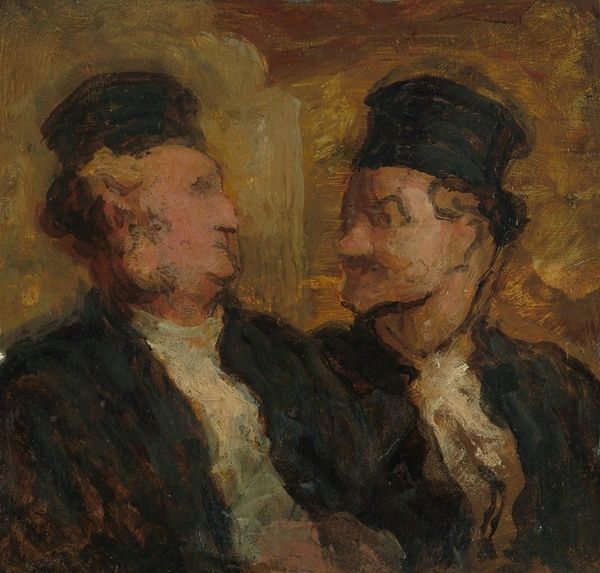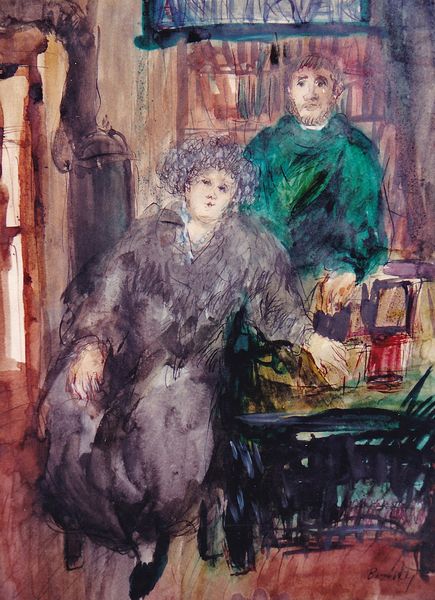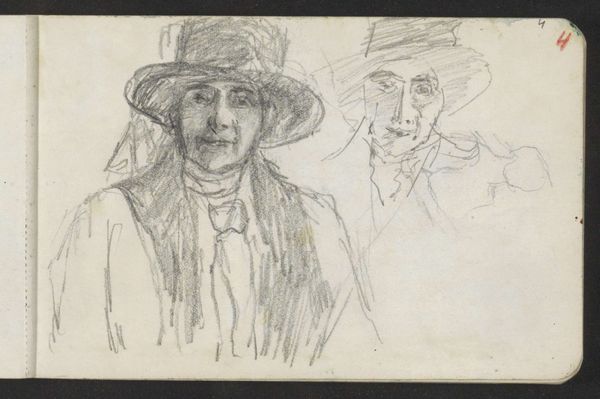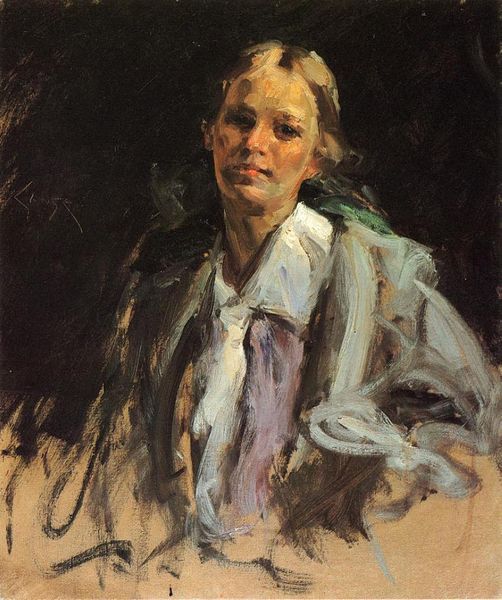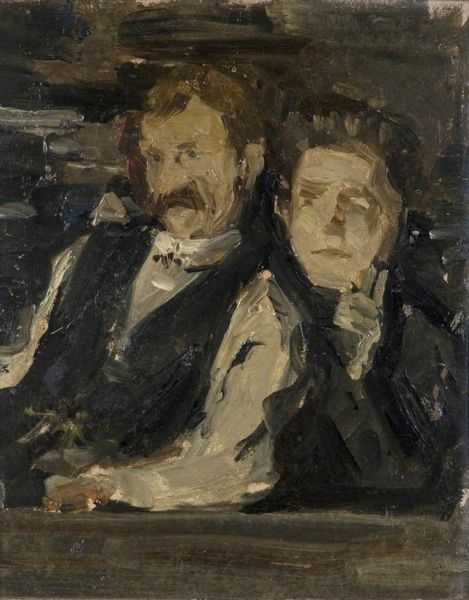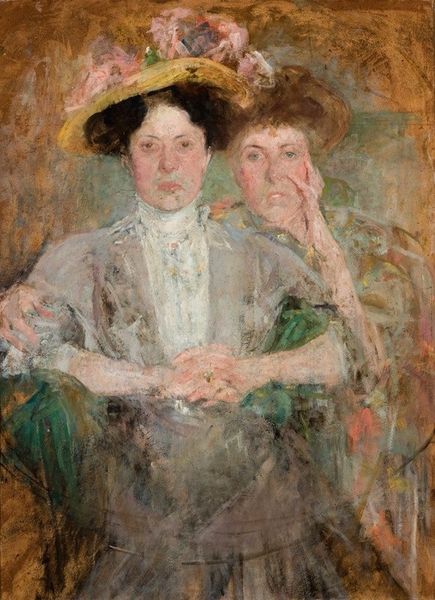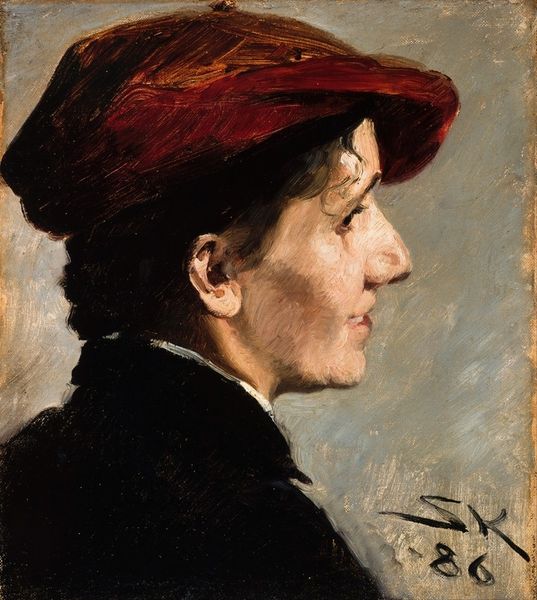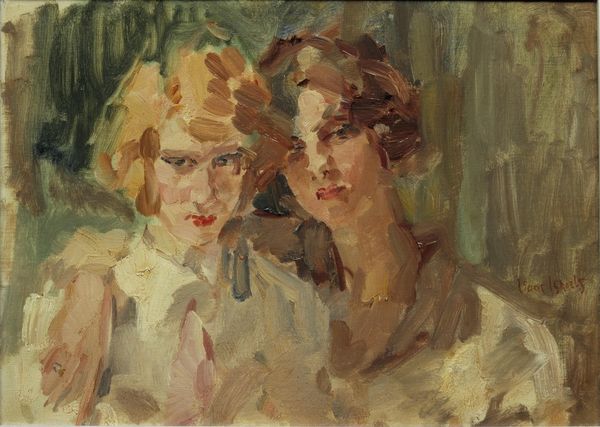
painting, oil-paint
#
portrait
#
narrative-art
#
painting
#
oil-paint
#
german-expressionism
#
oil painting
#
portrait reference
#
group-portraits
#
expressionism
#
portrait art
#
modernism
Copyright: Public domain
Curator: Here we have Lovis Corinth's 1919 oil painting, "Grandmother and Granddaughter". Corinth, a key figure in German Expressionism, presents us with an intimate portrait. Editor: The first thing that strikes me is how immediate it feels, almost unfinished. The brushstrokes are so raw, almost violent in places. The dark tones surrounding the figures makes for an unsettling mood, though. Curator: Absolutely. Observe the impasto technique—the thick application of paint—which lends a palpable sense of texture to the surfaces, animating both figures. Also consider its place within the context of German Expressionism. Corinth was grappling with personal and national turmoil post-World War I. Editor: So the anxiety translates into the hurried brushwork? This seemingly private image carries political undertones of a society struggling with the loss of tradition. Who exactly were his subjects, do you think? Curator: While the identities remain uncertain, it’s reasonable to infer that these women are indeed members of his close circle, each bearing the visible marks of time etched into their faces. The positioning of the two figures, too, offers some insight into a social dynamic – the protective stance of the grandmother could underscore concerns with safety during the war, no? Editor: I find the palette so interesting. The stark contrast between the deep blacks and blues in the clothing against the pinkish and yellow tones in the skin… It lends a certain drama, wouldn’t you say? Curator: It certainly amplifies the emotional weight of the piece. He is not only representing their physical likenesses, but evoking a deeper psychological space that's incredibly modern for its time. I notice also the formal element of the subjects failing to engage us; rather, their gazes are locked, seemingly into another world, beyond our sight. Editor: Perhaps Corinth sought to express more than the mere familial relationship; perhaps he wanted to explore generational trauma, an anxiety that permeated everyday life at the time. Curator: A poignant observation, indeed! In the end, it appears this seemingly modest portrait has much more to say about society's own angst. Editor: It does invite contemplation about what is represented—but equally, what has been carefully omitted—to provoke deeper insight into their interrelationship and to the mood of an era.
Comments
No comments
Be the first to comment and join the conversation on the ultimate creative platform.
